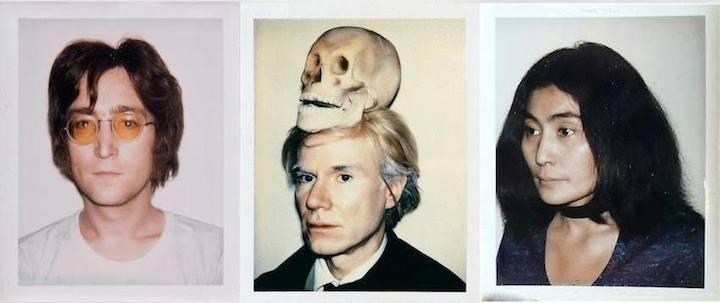Archive Fever: The Warhol Polaroids
The best thing about a picture is that it never changes. Even when the people in it do—Andy Warhol
Without doubt, Andy Warhol influenced the post-Modern idea of serial repetition more than any other late 20th-century artist. In 1962, he painted a series of Campbell Soup cans, one each of the 32 varieties. Done with a mechanical precision that echoed the mass-produced originals, his “portraits” of these consumer products were precursors of his serial portraits of celebrities and socialites.
In 1970 Warhol bought a Polaroid Big Shot camera, which rarely left his side. The artist who reveled in mass-produced art based on mass-produced objects finally had a tool that was not only a recording device but also a manufacturing plant. He could make pictures anywhere, and there was no waiting time for prints. With the Big Shot he photographed everyone who commissioned a portrait from him, and many others who stopped at his studio, the Factory, to take in the scene.

Following his death in 1987, thousands of these images became part of The Warhol Foundation for the Visual Arts archive, along with his paintings, silkscreens, and personal collections. In 2007 the Foundation launched the Andy Warhol Photographic Legacy Program; through this massive de-accessioning plan, the Foundation donated over 28,500 photographs by Warhol to educational institutions across the United States. More than 180 college and university museums, galleries and art collections throughout the nation participated in the program, each receiving a curated selection of original Polaroid photographs and gelatin silver prints. In most cases, the donation consisted of 100 Polaroidsand 50 black-and-white prints.
Among the conditions of the Legacy Program was the agreement that each institution would exhibit the photographs at least once every ten years. Starting around 2009, and continuing today, you could almost throw a rock and hit a Warhol Polaroids exhibition. These photographs were never shown during his lifetime, except as occasional illustrations for his portraits and “Disaster” paintings, so when they began to appear in galleries from coast to coast, a new appreciation for Warhol’s modernity began to accrue.
In a sense, Warhol created a social network—said by his cohort to mask his natural shyness—through his Polaroids. And as today’s social networks, through platforms like Instagram have emerged, it’s not surprising that the first iPhone camera and social network app, Hipstamatic, includes filters that mimic the early Polaroid look.
Archive Fever: To view the list of college and university art museums and galleries that have received selections from the Andy Warhol Photographic Legacy Program, go here. Many of these institutions have online galleries where the photographs can be viewed. Example: Grey Art Gallery, NYU Collection.






